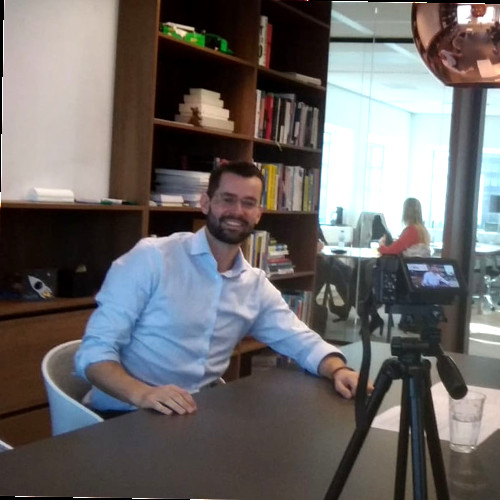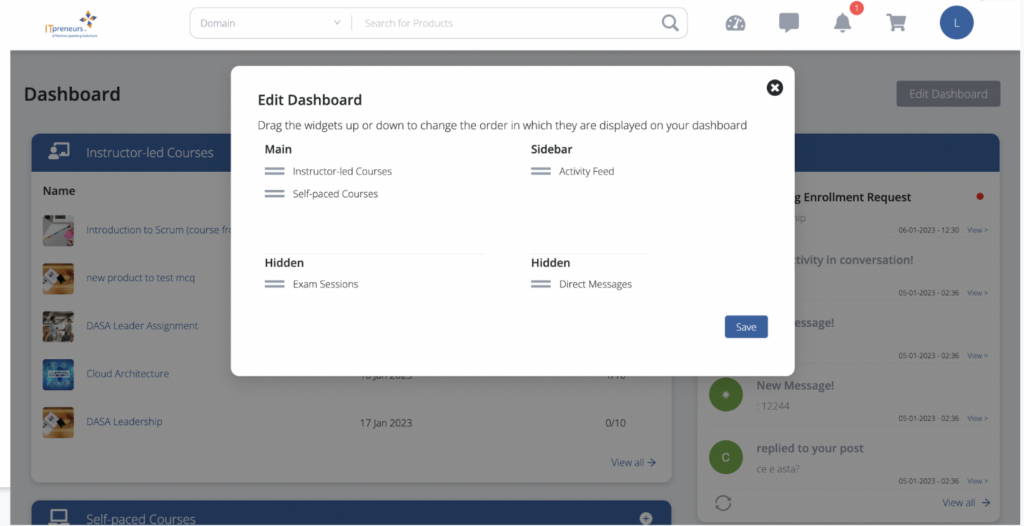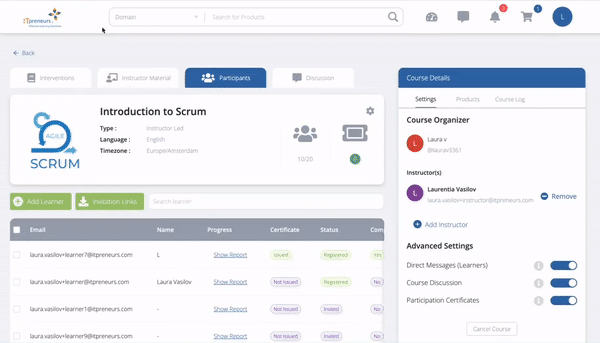Some time ago I posted an article for Simagine at the ITpreneurs blog repeating the obvious that we can talk and give our opinions endlessly, yet if we look at the actual situation, we may have changed absolutely nothing. This gap between speaking and acting is a major factor contributing to the complexity of organizational and behavioral change.
We deal with human irrationality, which requires more than a rational ‘best practice’ such as offered by ITIL®, PRINCE2® or even current AGILE certifications. There is however a noticeable and necessary shift from a focus solely on the logic of our left brain side (standard sets of best practices and guiding principles) to include also the non-verbal creative right-side-learning to practice what you preach! Call this a major shift of strategy or a leap ahead, it requires new efforts within the training community regardless. For some years already, the market prepares the fundamentals for this approach, as is for instance shown by the Hands-on programs offered by Simagine.
Training Matrix
In this light, it is only normal that the HR staff needs to review the training practices offered by the market after evaluating the organizational needs for sending people to training in the first place! Projects are failing? Don’t know how to go Agile? Need to have qualified personnel who will get the job done? There are so many options, yet most are still focused solely on the cognitive “What” level. Let’s look at alternatives or corroborate our current choices with the training matrix.
X-Axis: Goals
It’s the job of the teacher, trainer or facilitator to help participants reach the goals of the training. Any training has it’s own particular focus, be it knowledge, behavior and/or attitude.
The training focus I have plotted on the X-axis of the graph above based on Bloom’s taxonomy:
- Cognitive learning, the what, resulting in well-instructed participants.
- Psychomotor learning, the how, resulting in well-trained participants.
- Affective learning, the why, resulting in focused participants.
Whereas PRINCE2® Foundation training specifically focuses on conveying knowledge and philosophy of project management, the PRINCE2® Hands-on training aims to also train participants to apply the information and learn to give project solutions in a given scenario.
Where would you plot your training on this graph? Was the focus more on knowledge acquisition, on behavior training, or possibly more on the emotional areas? You may use this graph for any course or training so that you can verify whether you get the right type of training.
Accelerate Change with Business Simulations in Every Organization You Work with
Y-Axis: Qualities
It is tempting to use Dale’s cone on the Y-axis clarifying the best and worst training type. It would show in percentages (%) that learning by doing has the highest results (90%) and learning by reading or hearing just 10-20%. Unfortunately, these numbers are made up, not true, a myth. In fact, direct instruction and learning by reading are the single two best practices. Although the way of instruction has become a much more interactive coaching activity than how it used to be back in the day.
The Y-axis shows a basic, medium and strong signal, corresponding to the interaction strength of the training. Another aspect of training quality is the modality of training, which can be singular, mixed or integrated. Is there just a presentation with a slideshow (basic), a probing of lively discussions based on theory and practical cases (medium), or do you get an integrated learning method including online support and a serious game (strong)?
These three categories should be seen as a continuum. The most robust training is one with strong interaction and an integrated model using a variety of modalities. The simplest training has basic interaction and just one or a few modalities.
Furthermore, no matter how well-designed the training may be, the right type of person needs to lead the group. If a Medium Mixed training with a focus on behavior is in the hands of a teacher rather than a trainer it will be out of balance and lose quality on interaction. This training lead by a teacher will be focused on knowledge rather than on behavior transfers.
Another example of a misfit between training quality and leader is the Basic Singular training with a trainer instead of a teacher. The trainer will try to focus group attention on behavior rather than the cognitive content that needs to be taught.
Thus, Basic Singular or Strong Integrated trainings all have potentially the same quality, yet are meant to serve different purposes! To stress this point: whereas the Strong Integrated training would, for instance, use a facilitator and fully-fledged serious game including e-learning modules, the Basic Singular training uses a teacher and flip-overs to get the message across. It would be too costly using a Strong Integrated training just to get a basic knowledge of Project Management (PRINCE2®), just as it would be ineffective to settle for a Basic Singular training to have participants learn using Scrum behavior. However, next to just basic knowledge on the cognitive level, there is a strong need for practical experience as is offered in Hands-on programs and Serious games!
Do We Offer The Right Type of Training?
In order to ensure you deliver the right type of training, whether it’s a lecture, a workshop or simulation, the type of training (Y-axis) needs to be in balance with the training focus (X-axis). The vertical domain crossing the graph illustrates this balance.
It is time to move ahead. Society has grown more complex, best practices do not meet their ends anymore.
My simple idea is that the real 21st century around us isn’t so obvious to us, so instead we spend our time responding rationally to a world which we understand and recognize, but which no longer exists.
Eddie Obeng, Qube.cc
Too often I hear from participants that the training in current formats does not sufficiently prepare for practice. A year later I find the same participants at a higher level ‘best practice’ training, which is still too much focused on the cognitive level by nature. The practical use of so-called ‘best practices’ devalues if we won’t change the goals, examinations and training methods. And thus as an individual trainer, I am updating my own training every time following the Agile practices of iterative and incremental improvement.
There are however proven alternatives, which save costs and time to creating your own upgraded version of trainings. Simagine has a solid track-record for Hands-on programs and Serious gaming. There are many other players in the market who add value to trainings, yet, none has bridged the gap of saying and doing so within the existing Axelos products of ITIL® & PRINCE2® if I can say so myself.
Want to know more about the power of simulations? Click here.
About the author

Experienced senior trainer and coach with a demonstrated history of working with international clients on digital transformation. Others say that I create movement and tempo and am not afraid to bring real change beyond buzzwords.



